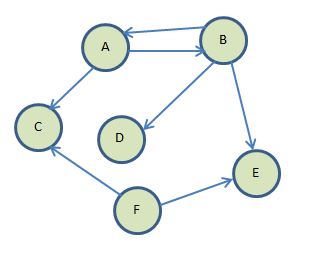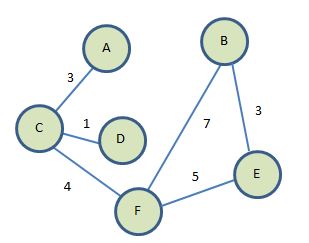3. Graph types
Directed graph

In a directed graph, movement between vertices is restricted. We indicate this using arrows as edges. For example you can go from A to C but you cannot go the other way from C to A.
This pattern of movement is called the flow. We use directed graphs to model flow in situations like road traffic or street layout, where one-way streets restrict movement within a city.
Undirected graph
This is the simplest kind where the edges have no particular direction or flow associated with them. Like this:

For example A and C are connected but there is no indication of a direction to the connection.
Consider a graph to model friends on a social network, replace 'A' with 'Annabel' and 'C' with Charlie then the edge is indicating that Annabel and Charlie are friends, but it makes no sense to imply a direction to that friendship.
Labelled or Weighted graph

In weighted graphs, movement from one vertex to another has a 'cost'. This is usually labelled as a number. Different edges will have different costs.
You can apply weightings to both directed and undirected graphs.
This type of graph is used alongside programs written to maximise efficiency. For example, a route calculator in a mapping program will add up the total travel time of each possible path between two locations, and present you with the best one. Routers use weighted graphs to minimise latency.
Challenge see if you can find out one extra fact on this topic that we haven't already told you
Click on this link: Directed and Undirected graphs
